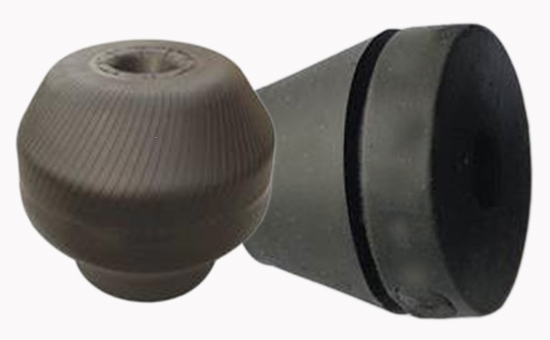
Rubber water resistance refers to the ability of vulcanized rubber to resist water and water vapor, and rubber with small water absorption is better in water resistance. Among various types of rubber, butyl rubber has excellent air tightness and water tightness, and is often used to produce water-resistant rubber products. Rubber product manufacturers often use butyl reclaimed rubber to reduce the raw material cost of butyl water-resistant rubber compounds. So in actual production, how can rubber product manufacturers further improve the water resistance of butyl water-resistant rubber compounds?
1. Use resin vulcanization
The spatial structure of butyl rubber molecular chain is spiral-shaped, the methyl groups are closely arranged, and the degree of unsaturation is low. After the resin is vulcanized, it can form -CC- and -COC cross-linking bonds with high stability. The vulcanized rubber is water-resistant and super-hot water resistant Good performance. The experiment shows that after the resin vulcanized butyl compound is immersed in superheated water above 170℃ for a period of time, the change in strength and extension is very small; the weight increase rate in the water absorption experiment is low. Therefore, many butyl water tires use resin vulcanization, and the rubber compound has better water resistance, superheat resistance, and steam resistance.
When sulfur vulcanization is used, the amount of sulfur and cross-linking agent can be increased appropriately, and the density of the vulcanization cross-linking network can be increased to a certain extent to improve the water resistance of butyl rubber.
2. Control the content of impurities Avoid using water-soluble electrolyte complexing agents
Rubber has a semi-permeable membrane function for electrolytes in aqueous solutions. When rubber contains water-soluble impurities such as emulsifiers, PH buffers, and coagulants, these impurities will diffuse into the water in the rubber after dissolution, and after the osmotic pressure difference occurs inside and outside Water will penetrate into the rubber, and the water resistance of rubber products will be severely damaged. Therefore, when using butyl rubber or butyl reclaimed rubber to produce water-resistant rubber products, it is necessary to avoid mixing impurities and strictly control the content of impurities.
In actual production, sodium chloride seriously affects the water resistance of butyl water-resistant rubber. Sodium sulfate has a greater influence on the water resistance of butyl rubber compounds, followed by sodium stearate; stearic acid 2LLYY617 has little effect on butyl water resistance. . Compounding agents such as rubber fillers containing water-soluble impurities or the direct use of water-soluble compounding agents can also easily lead to a decrease in the water resistance of water-resistant rubber products.
3. Avoid the use of easily drawn out ingredients
When using butyl rubber or butyl reclaimed rubber to produce water-resistant rubber products, avoid using rubber fillers, anti-aging agents and softening plasticizers that are easily withdrawn as much as possible, and reduce their dosage if necessary. Inorganic fillers usually contain traces of soluble salts, which will increase the water absorption of vulcanized rubber, such as calcium carbonate, magnesium carbonate and other water resistance is very poor. Aromatic amine antioxidants and low molecular weight rubber antioxidants significantly shorten the service life of water-resistant rubber products. For example, antioxidant 4010NA is easily extracted from rubber products by water.
During the preparation of water-resistant butyl compounds, the use of silica fillers with high ion permeability such as white carbon black and calcium silicate can significantly improve the water resistance of rubber, or use furnace carbon black to reinforce; plasticizer DIOS is water-resistant The extraction performance is better. In actual production, to improve the water resistance of butyl rubber compounds, rubber product manufacturers can also start from the production process, optimize the production process under the premise of rational selection of rubber compounds, and design formulas to further improve the water resistance of butyl rubber compounds. Later editors continue to discuss with you.
Exclusive original article [commercial authorization] reprint, excerpt and excerpt in any form are prohibited without written authorization. Focus on Hongyun rubber: learn the process formula and raw material technology of producing rubber products from recycled rubber to help you reduce costs and increase profits